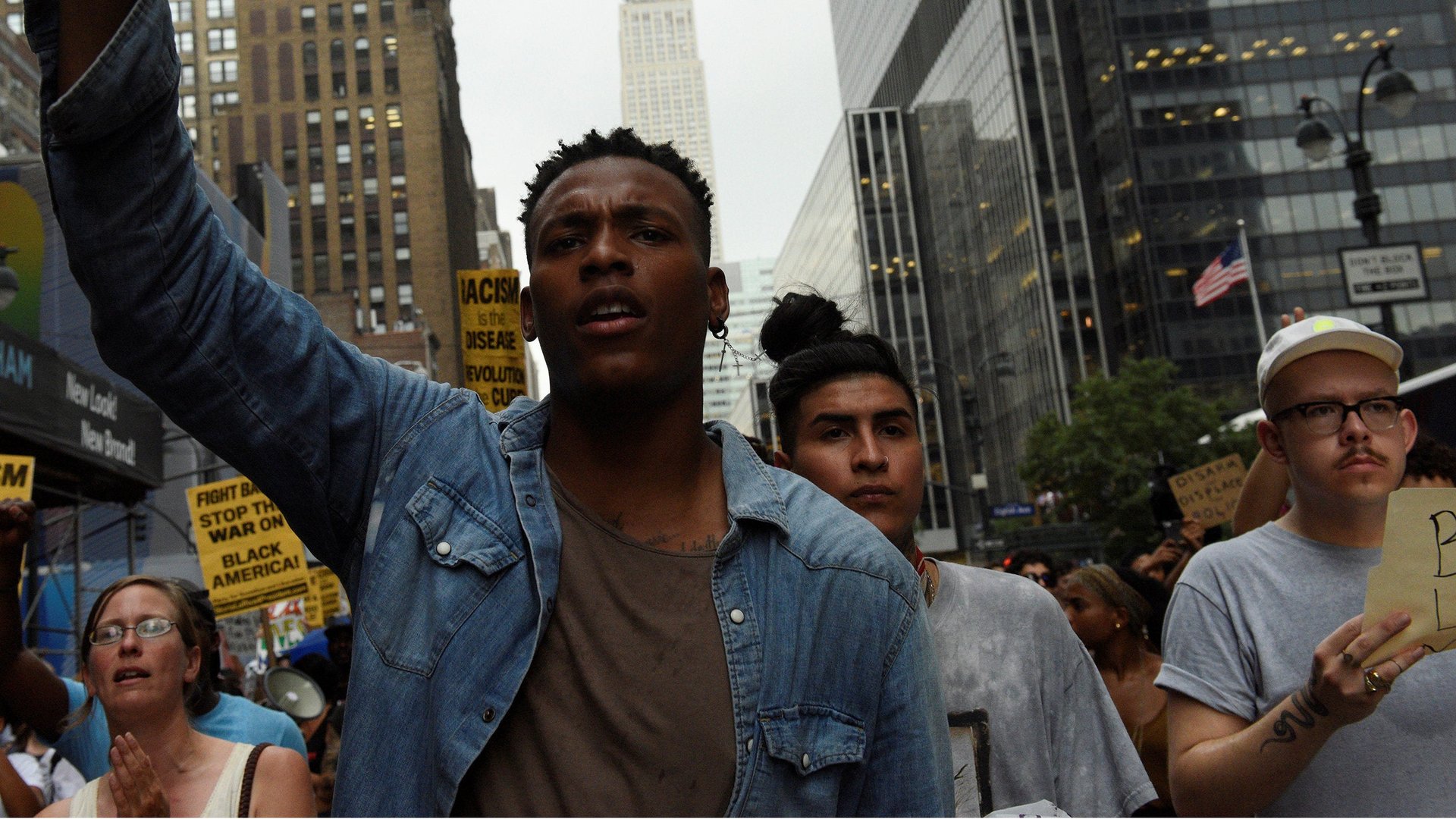The data are in: Young people are increasingly less racist than old people
On May 7, Emmanuel Macron—centrist, pro-European, pro-immigrant—won the French presidential election runoff against the far-right populist Marine Le Pen. After victories by Donald Trump (who has said “laziness is a trait in blacks”) and for a Brexit campaign led by the UK Independence Party (amongst which’s backers 48% admit prejudice against people of other races), that is some relief for liberal globalists who feared a nativist, racist backlash spreading across the West. But it should not have come as such a surprise: the global trend is towards less discrimination on the grounds of skin tone or caste.


On May 7, Emmanuel Macron—centrist, pro-European, pro-immigrant—won the French presidential election runoff against the far-right populist Marine Le Pen. After victories by Donald Trump (who has said “laziness is a trait in blacks”) and for a Brexit campaign led by the UK Independence Party (amongst which’s backers 48% admit prejudice against people of other races), that is some relief for liberal globalists who feared a nativist, racist backlash spreading across the West. But it should not have come as such a surprise: the global trend is towards less discrimination on the grounds of skin tone or caste.
In the 1960s, almost half of white respondents in the US suggested they would move if a black family moved in next door. But the proportion of Americans reporting to the World Values Survey that they were uncomfortable living next to someone of a different race fell from 8% in the 1980s to 6% today. Again, in 1958, only 4% of Americans approved of interracial marriage according to Gallup polling. Support only crossed the 50% threshold in 1997. It has now reached 87%. Although people can lie to surveyors about their beliefs, the polling matches up with behavioral change: in 1980, less than 7% of marriages were between spouses of a different race or ethnicity in the United States. That climbed to 15% by 2010. There were 6,336 racially or ethnically motivated hate crimes reported by the FBI in 1994—that dropped to 3,310 in 2015.
And it isn’t just the US: the World Values Survey has data on the question about being uncomfortable living next to neighbors of a different race for 29 countries—home to 60% of the planet’s population, covering two waves of the survey—1999 to 2004 and 2010 to 2014. Progress is far from universal: sixteen countries have seen a decline in racism on this measure; in one country, attitudes remained unchanged; and in twelve (seven of them in Europe), attitudes have become worse. But the data suggests that about 23% of the world would have reported discomfort living next to someone of a different race in the early 2000s compared to 17% in the early 2010s. In India, for example, 42% of respondents reported they wouldn’t want to live next door to someone of a different race fifteen years ago, that has dropped to 26% more recently. In Argentina, fewer than 1% display racism on this measure.
Improving attitudes worldwide are reflected in a changed legal environment: the political scientists Victor Asal and Amy Pate studied laws affecting ethnic minorities in 124 countries between 1950 and 2003. Over that time, the proportion of countries with policies discriminating against ethnic minorities fell from 44% to 19%, while the proportion with policies favoring minorities increased from 7% to 25%.
Even if reported racist attitudes may be on the decline, attitudes can persist after people stop wanting to admit them to pollsters. And racism remains a huge social and economic problem. In the US, it remains a major contributory factor to outcomes including depression, ill health, lower employment and wages, and convictions and jail time. Worldwide, New York University’s Debraj Ray and colleagues have shown that ethnic division remains a major contributory factor to civil conflicts (although the silver lining is that some of that conflict is linked to ethnic groups losing privileged status).
Nonetheless, the trend towards less discriminatory attitudes, matched by a trend towards less legal discrimination worldwide, is a hopeful sign that racism is on the retreat—and it is likely that progress will continue, because young people are less racist than their elders. In France, for example, although Le Pen did comparatively well among youth voters in the first round of the election, young people overall are significantly less likely to say they did not want to live next to people of another race than old people in the last World Values Survey (14% of those under thirty compared to 31% of those above the age of fifty). Thankfully, Le Pen and Trump represent a way of thinking that is dying out.